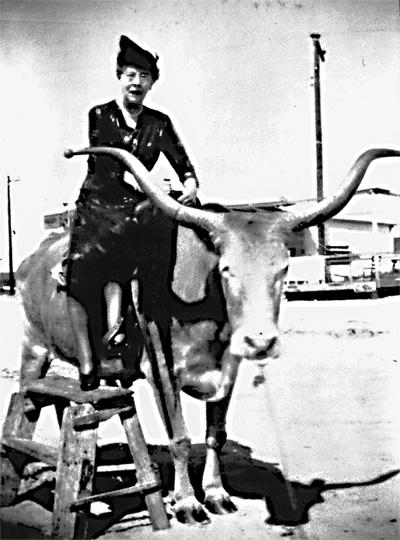Guestwords: Springs School Memories

My mother just sent me a birthday card with the five volumes of “Origins of the Past,” the series on local history that recently had its latest installment published. Her note on the card: “I think that your heritage can influence your whole life.”
Emma Louise Edwards, my grandfather’s sister, started teaching on Gardiner’s Island at the age of 16 in 1884. She was paid by the Springs School District (since Gardiner’s Island is within the district’s boundaries). Her salary was $25 to teach during the summer term and $35 in the winter for all grades, first through eighth, in one room. She taught a freed slave, James Stuart, to read and in return he gave her a pin made from an arrowhead found on the beach.
My mother, Norma Edwards, Emma’s niece, gave that arrowhead pin to me. Bertha Edwards, another relative, filled in as the principal for one year in 1920. She is one of the few female administrators to have held that position, and one year may be the record for the longest tenure by a female administrator at Springs.
My grandmother Alice Look (Edwards) came to Springs in 1920 and boarded with Merton Edwards’s family diagonally across Fireplace Road from the church. She married Merton’s youngest brother, my grandfather, and was known as a strong-minded, devoted teacher and not much of a housekeeper. Although I never knew her, since she died the year before I was born, I am told that I inherited both traits.
When I started school at Springs in 1955, it looked much the same as it had in 1931 (the year the new school was built to replace the wooden one that had burned in 1929). I was a year younger than my classmates. All my friends were already 6 and starting school that fall. As there was no kindergarten, my mother opted to send me. We had 12 students in my class of mostly girls. Bradley Mott and Danny King were greatly outnumbered by the likes of Shirley Talmage, Susan Talmage, Terry Miller, Linda Rea, Margie Miller, and Mary Ann Reichart, to name some of my friends.
The first grade was presided over by Nellie Thiele in the room that had been the school’s first stage and gym. My grandmother had taught at Springs for many years, and Mrs. Thiele showed me a book with her name in it and let me shelve it. At that moment, I planned to be a teacher someday.
My art teacher was Marge Neylon. She traveled from class to class. Our first assignment was to draw a pet. I chose my cat, Pansy. She added a few whiskers and eyelashes to the rectangle and it was posted on the bulletin board. My day was a complete success.
Springs was known for its educational excellence and the warmth and dedication of its teachers. Mary Alice Sargent, the teacher of the combined grades two and three, embraced her classes with creativity, a hug, and a song. She built a tepee that was as tall as our high ceilings would permit. Each day was started and ended with patriotic music, which she played with gusto.
Emma Lester taught grades four and five in one room with the traditional methodology of rote and repetition. Each spelling word was copied 10 times, and students who were not attentive were sent to their desks to copy a sentence of contrition up to 25 times.
Leila Lee was hired to teach sixth grade in 1960, the year the building’s addition was added, sparing my class from transferring to the high school until ninth grade, to my great relief. She was an actress, an anthropologist, and a free thinker. I adored her. I had always felt great pride in Springs — the beauty of its building and the competence of its staff — but my devotion was renewed.
Ophelia Harris and Fred Yardley were the mainstays of the junior high, caring, consistent, and reliable — very patient with the junior high students, a difficult age at best. Bill Lycke was the principal. He taught math to the eighth graders. We started a literary magazine, By You, with Mrs. Harris and organized a small library where the business office is now. We played basketball in the beautiful new gym, on the site of the school’s library today.
I stood on the stage at the end of that old gym in my starched crinoline and fresh corsage to graduate from Springs, very sad to leave, apprehensive of the high school, and hoping to return someday.
I went on to teach high school in Baltimore County, Md., for 23 years. Finally I returned home to Springs in 1996, when Hugh King retired to teach the academic enrichment program. I have made it my mission to instill my love of the school and its traditions that were passed on to me many years ago.
Sue Ellen (Edwards Marder) O’Connor lives with her husband in Southampton. She was inspired to write this “Guestwords” after she read the booklet about the Springs School recently issued by the Springs Historical Society and on sale at the Springs Library.
